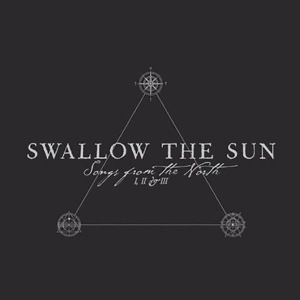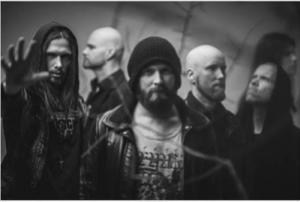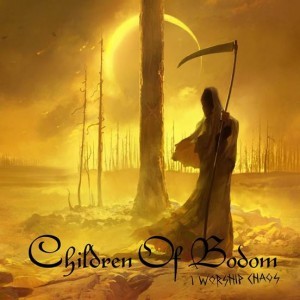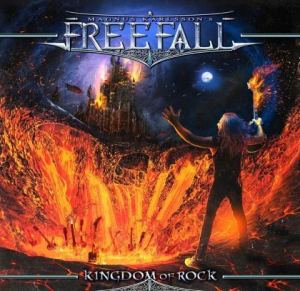There’s an intimidating amount of highly anticipated new releases in these first few months of 2019, turning the old notion of the slow start to the release calendar on its head. I’ve also been introduced to or stumbled across a handful of intriguing releases by artists new to me, and the upcoming release calendar has a lot of albums by newer bands I’ve been told to check out so we’ll be venturing into a lot of uncharted territory in the future too. So without any further preamble lets get to it!
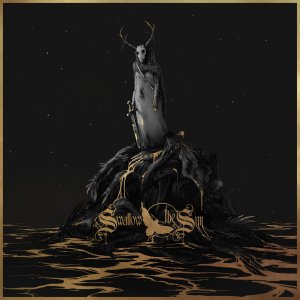
Swallow the Sun – When A Shadow Is Forced Into The Light:
So I’ve sat with this album for a few weeks now, and I wanted to let it marinate for awhile before writing a review because I have to guard against the fact that in the intervening time between the release of 2015’s triple album Songs from the North I, II & III, I’ve become a massive fan of this band. I’ve gotten to see them play live twice in the intervening period, their hoodie has become my most worn metal apparel since that Nightfall’ Blind Guardian shirt I wore massive holes into, and I’ve deep dived into their discography repeatedly like a sugar addiction. I’ve been here before, where one’s enthusiasm for a band in general can color a new release in one’s own eyes, so I listened to this thing to death for the past few weeks, took a few days off, and have come back to it again to see if anything’s changed. But before I get to that, lets just talk about the elephants in the room with this record —- its the first album after the passing of founding guitarist/songwriter Juha Raivio’s partner Aleah Stanbridge. Its worth the mention because of just how much Raivio’s recent musical activities have been informed by it since her passing in April of 2016; the year end list making Trees of Eternity album, as well as the agonizing brutality of 2017’s Hallatar release. Its also the dawn of new guitarist Juho Räihä as a permanent member of the band (he has been their live guitarist standing in for Raivio for a few years now), replacing the band’s longtime guitarist Markus Jämsen. In 2016, the band’s longtime keyboardist Aleksi Munter also left, being replaced by Jaani Peuhu. Both Munter and Jämsen were in the band since 2001, practically founding members, so these aren’t necessarily inconsequential lineup changes.
This is a wildly surprising album, a confidently bold direction for the band to stride towards at this pivotal junction in their career. I mentioned Raivio’s musical mourning process on the Trees and Hallatar records; the wounded sorrow of the former and the pure rage of the latter, and it should be noted that this process continues here on When A Shadow… although in a tone that is at once still saddened yet also reverential and even hopeful in glimpses. Raivio accomplishes this by steering the musical direction of the band towards an arms wide embrace of gothic metal’s sweep and grandeur, incorporating a stylistic shift that brings to mind Paradise Lost and Sentenced’s sweeter moments, even reflecting a little Moonspell in the vocal approach. Far removed from the subdued clean vocals of Songs From The North Pt 2, here screamer/vocalist Mikko Kotamäki and keyboardist/backing vocalist Jaani Peuhu weave around each other with glorious melodic harmony vocals that cast a dramatic glamour over these songs. The complex and satisfying vocal layering is central to the impact of these songs, being written around both singers’ vocal melodies in a way that Swallow the Sun simply hasn’t tackled before so full on. Kotamäki is still a riveting screamer, full of blistering fury delivered with a razor sharp enunciation that ensures he’s landing every emotional gut punch. But its Peuhu who might be the quiet MVP of this record, his backing vocals (he’s so present everywhere on the album that he should really be considered a co-vocalist here) are utterly perfect in terms of tone and shading, and the vocal mix here by Jens Bogren is as lush as it needed to be.
Raivio’s lyrics across this album approach poetic levels of evocative imagery and storytelling, painting a dreamscape of vast reaches of starlit skies, endless black waters, fires and shadows, solitary temples and lonely places. His lyrics speak with a tone that is as reverential as it is grief stricken and lost, and I don’t think I’ve ever heard more convincingly pained and aching lyrics in extreme metal before (this is typically stuff that’s better handled by the Neko Cases of the music world). I would mention a specific example here, but what to pick, its all remarkable work. I will say that regarding both lyrics and music, “Here On The Black Earth” may just be my favorite Swallow The Sun song of all time, its escalating chord progression in the chorus is incredibly powerful stuff, and the gorgeous vocal harmonization of Kotamäki and Peuhu is as dazzling as the most ear candied Steven Wilson truffle. Looking back, I can say that although I really loved big chunks of Songs From The North (disc one was nearly flawless), I had difficulties cracking the album as a whole. Its partitioning of the band’s sound into three distinctive chapters (classic / mellow / funeral doom) seemed so final and conclusive even at the time, like a giant period at the end of a sentence. I suspect that Raivio felt the same way when he finally returned his attention to Swallow the Sun, and he felt that the only way forward musically (and perhaps emotionally as well) was to forge ahead with something radical (relatively speaking that is). His instincts were right, and I hope he knows deep down what myself and others have already figured out, that this is the greatest Swallow The Sun album to date. And I wish he never had to write it, that circumstances never resulted in this particular expression needing to surface, but I’m grateful for having it.

Soilwork – Verkligheten:
Now admittedly I haven’t been following Soilwork at all since 2005’s Stabbing the Drama, and although I enjoyed the records that preceded it I was never a big fan. So I have no context to compare the difficultly titled Verkligheten to, except to say this is not what I remembered this band sounding like the last time I checked in. And I might have heard one or two of their singles on YouTube or Spotify playlists over the past few years, looked up and thought “Oh Soilwork”, but if they sounded as strikingly different as the stuff on this album I must’ve not been paying attention. The obvious theory here is that vocalist Bjorn Strid’s time moonlighting with his other band The Night Flight Orchestra has rubbed off immensely on Soilwork, to such an extent that some of these songs feature hooks that might have felt right at home on Sometimes The World Ain’t Enough. I have become a big fan of that band lately, really enjoying all their records and I think that Strid just feels more at home in that milieu, not only as a frontman and performer but as a songwriter as well. His personality broke out in the Night Flight context, and it made me realize how much I didn’t know who he was in Soilwork really.
This Night Flight influence soaks into cuts like the music video dressed “Stålfågel”, where harmony backing vocals from Alissa White-Gluz (because of course apparently, at least they had a different role for her than we’re used to) coat the song in a hard rock sheen much like the “Airline Annas” did on the last NFO record. Its an undeniably catchy earworm of a song, and I really love its escalating approach in the verses, with Strid stressing emphasis at just the right moments to keep the drama heightened. On “Full Moon Shoals”, we’re treated to yet another maybe this was meant for another band slice of melodic hard rock, and all the overdubbed screaming vocals can’t really disguise it, particularly when we’re “oooh ooohh”-ing in the chorus. Not that I think the band is trying to disguise it, nor should they because I think bleed over is natural, but they run that Edguy/Avantasia risk where both bands start to sound sonically similar even if the lyrical tone moves further and further apart. In fact, my main criticism of this album is that they didn’t lean hard enough in that direction, and I find myself losing interest in the more standard modern melo-death stuff on the album, sure its heavy and there are a few good riffs thrown around, but I want more of those melodic choruses. I came away intrigued enough by this outing to definitely check out whatever Strid serves up next as Soilwork, but I’m far more eager for more neon lights, Camaro convertibles, palm trees, and pastel sport jackets from the Night Flight world.

Helevorn – Aamamata:
This was a random discovery I stumbled upon when reading the subject line of a random email in my inbox that said “For fans of Swallow the Sun…”, and that was enough to get me to click through to hear the promo, expecting to hear some watered down version of that supposed influence. And its fair to say that fans of Swallow the Sun will likely enjoy Helevorn, but they’re so much more than a copy of that band, in fact I think this band’s influences pull far more from 90s gothic metal like Paradise Lost, My Dying Bride, and particularly their countrymen in Moonspell. I hear it not only in the songwriting structure, where juxtaposing elements slide alongside each other in purposefully jarring ways, but in the guitar tone that vividly recalls the sound heard on Wolfheart, Irreligious, or even later Moonspell records like Extinct. Its a bit unfair to reduce a new band to what one’s own perception of their influences are, but for one its a hard habit to break and secondly its maybe the easiest way in for anyone new, as was the case with me and that email subject heading.
The variety of songwriting here is of particular note, because Helevorn can veer from a doom laden sense of aggression to a velvety dreamscape (as in album closer “La Sibil-la” with its Spanish acoustics, string beds and echoing vocals). Vocalist Josep Brunet alternates his distinctive clean vocals with a throaty growl, and often shifts into a talking vocal approach that is redolent of gothic metal and rock vocalists all around, that purposeful slowing of the voice to draw a listener’s attention to the lyrics. He’s got a rustic, dignified, somewhat aged quality to his vocal that is particularly appealing, at once lending some elder authority to both his extreme vocals as well as clean singing (major hints of Nick Holmes on both counts). I love that Draconian’s Heike Langhans drops in for a solo vocal appearance on “The Path To Puya”, and the effect when Brunet and the band come surging in to back her up is strong and powerful. I’m not sure who the clean vocalist is on the Spanish lyric semi-ballad “Nostrum Mare (Et deixo un pont de mar blava)” but she’s a highlight moment on the album all her own, particularly when the guitars sweep in underneath with a truly inspired solo. The key word with Aamamata is emotion, because its wringing out of every note throughout this record, and its refreshing to hear something new (well, to me anyway, this band has been around for over two decades) that is hearkening back to that late 90s style of gothic metal without taking on the sometimes watered down trappings that come with it. Can’t recommend this album enough.
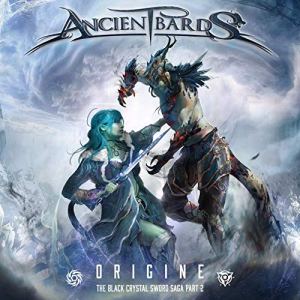
Ancient Bards – Origine – The Black Crystal Saga Part 2:
For as much of a power metal fan I consider myself to be, I’ve always been somewhat allergic to the Italian variety. Not that I think its unlistenable or crudely done, quite the opposite actually, but its just never hit me with the same impact of other approaches coming from elsewhere. That long maintained tendency seems to be changing for the better with newer bands such as Frozen Crown with their debut last year as well as through the work of Ancient Bards, whom I’ve been passingly aware of the last few years. Though I was a few years late, their first three records really demonstrated something of a sharp songwriting sensibility that favored a hooks-first approach over a tired need to thrust storylines to the forefront (a critical flaw of Rhapsody’s music to me anyway). As a direct sequel to their concept/storyline driven debut, Origine is a little more darker toned in its overall vibe, but is still operating in that neo-classically informed mode of power metal bombast. They’re also rounding that corner where they’re not afraid to introduce some unexpected influences into the mix.
I’m chiefly referring to the extra dose of pop (beyond you know, normal power metal levels of “pop”) soaking into cuts like “Home of the Rejects” or “Aureum Legacy”, where vocalist Sara Squadrani shoulders the verses with an almost Broadway sensibility guiding her vocal melody. She’s at her most confident sounding on this record, putting herself out there vocally in a way that is daring in its escaping the constraints of the rigid power metal structure Ancient Bards largely operates in. Her standout and standalone moment is, well, as Cary the Metal Geek put it on our recent MSRcast —- the Disney Princess ready ballad “Light”. Its an apt description, because I could envision that in the hands of say Idina Menzel, this could be the show-tune hit on the upcoming Frozen 2. The song has been met with equal parts effusive praise and eye-rolling, with most of the audible groans coming from power metal purists who think this kind of balladry has no place on a power metal record. I just disagree, and Squadrani’s crystalline voice is perfect for a tune like this and her performance here is incredibly affecting. On a side note, they boldly chose it as a music video track, a risky move for any metal band these days when balladry has zero commercial truck with the public and risks alienating returning fans, but I gotta say, its certainly a pretty clip. This is another fun entry into the discography of one of the strongest new power metal bands to arrive on the scene in the past decade, more proof that there’s more to Italian power metal than I ever expected.
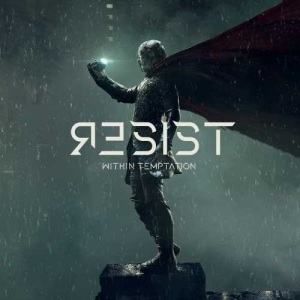
Within Temptation – Resist:
So I really wanted to take my time with this album and give it an honest airing in lieu of all the bad press its been getting since its December delay and subsequent pillaging in the recent flurry of reviews I’ve seen for it. If you recall my review for their last album in 2013, the bewildering Hydra, had a few withering criticisms of their then current musical direction and decision to include a handful of guest vocalists (I think it was four at least if I’m remembering right) for whatever reason. Remembering that review and juxtaposing it with Sharon Den Adel’s My Indigo solo project last year (where she revealed during its promotion that she battled writer’s block for Within Temptation), a record she described as “needing” to write really put the unfocused nature of Hydra in perspective. That record, with its forced duets and half-baked songwriting was the result of a band that had external stresses and was under the gun to get something released. The five year break that separates Hydra and Resist, the longest in their history, should probably have come after the promotional cycle for 2011’s The Unforgiving. The smart play for Within Temptation would’ve been to come storming back with an album that played to their strengths ala their first three albums, but instead they’ve chosen to pursue a path that pushes them further away from their core sound than they’ve ever been.
It really starts and ends with Den Adel’s preferences it seems. I did listen to her My Indigo record out of curiosity, and it was a decent albeit aggressively safe slice of modern indie toned pop. It was interesting to hear where Den Adel’s preferences lay when it comes to choices like production, because when we’ve heard Within Temptation get increasingly glossier and overproduced over the years, one wondered if it was the natural arc of their musical career, or a collective band decision, or something else. I’m starting to think that Den Adel just feels more comfortable in the world of modern production gloss, because for an album that was supposed to be her emotionally vulnerable solo record, I had hoped to hear something a little more vulnerable and stripped down. So it goes with Resist, where the production gloss has heightened to another level to such a degree that it completely dwarfs any metallic aspects going on underneath those layers. This is ostensibly supposed to be a dark, dystopian sci-fi themed record, and it is that, but not in the sense of heavy riffs and grand sweeping strings leading the way. Instead the sound of Resist owes more to the production flourishes of EDM and modern synth-pop artists like Chvrches, with the songwriting locked into a style that resembles alternative rock far more than symphonic metal. Speaking of the Scottish synth-pop band (if you saw my last blog update you’ll know I’m a big fan), Within Temptation even ape them a bit on their newest music video for “Raise Your Banner”, its chaotic showdown premise strikingly reminiscent of Chvrches video for “Miracle”. Its really hard to avoid the comparison.
The problem with this path for Within Temptation is that its simply not what they do well, whereas a band like Chvrches is specifically designed for this approach, two electronic musicians on synths and samplers while Lauren Mayberry pours her heart out up front. There’s spacing in their music, starts and stops, an innate understanding of how to manipulate EDM rhythms, song structures, tempo shifts, and the almighty “drop”. Within Temptation has three guitarists in the band…. why? What we hear on Resist is a dense wall of ultra-processed, noticeably compressed, amorphous sound. Its a black hole for riffs, with only passing few moments where one can hear multiple guitar patterns or solos. These songs seem to be stuck in one tempo as well, casting a sameness over the entire record. It does sound different from Hydra that’s for sure, but that apparently came at the cost of sounding entirely like one long song, something that its guest vocalists hardly budge. The Jacoby Shaddix guest spot on “The Reckoning” is decent in spots, particularly when they’re both singing together in the post chorus, but its the weakest of these type of songs they’ve cooked up in their catalog. The only other standout here is “Holy Ground” for how awkward Den Adel’s vocalizations come across. I think I get what Den Adel and Co were aiming for here, a futuristic soundscape which mirrored the theme of the album, but that’s not how they have excelled as a band. The real revolutionary move here would’ve been to scale down, get back to basics with a guitar forward album with swirling orchestral accompaniments. It would’ve been a striking study in contrasts against the dystopian sci-fi theme they’re so adamant about. I think its time to put that hope to bed permanently though, because like it or not this is likely how Within Temptation will sound going forward.

